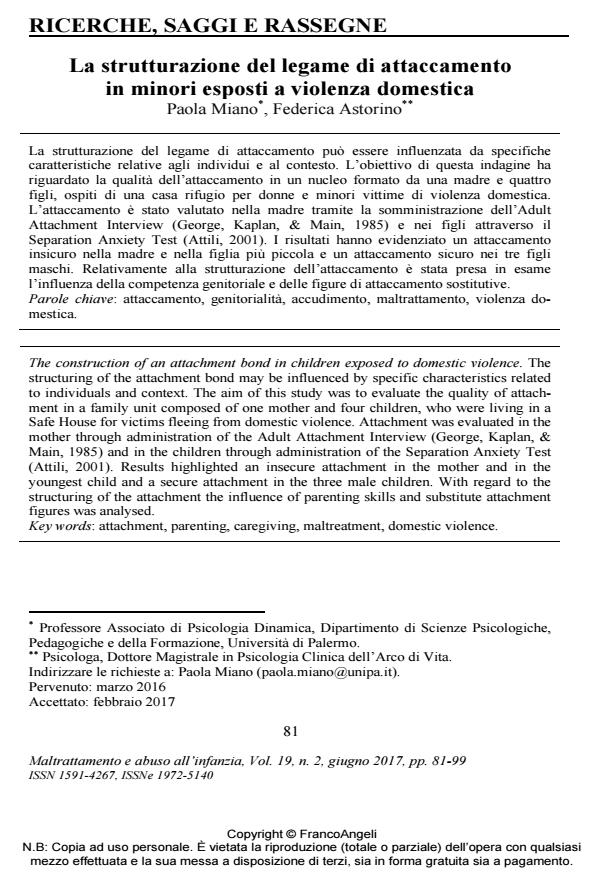La strutturazione del legame di attaccamento in minori esposti a violenza domestica
Titolo Rivista MALTRATTAMENTO E ABUSO ALL’INFANZIA
Autori/Curatori Paola Miano, Federica Astorino
Anno di pubblicazione 2017 Fascicolo 2017/2
Lingua Italiano Numero pagine 19 P. 81-99 Dimensione file 212 KB
DOI 10.3280/MAL2017-002005
Il DOI è il codice a barre della proprietà intellettuale: per saperne di più
clicca qui
Qui sotto puoi vedere in anteprima la prima pagina di questo articolo.
Se questo articolo ti interessa, lo puoi acquistare (e scaricare in formato pdf) seguendo le facili indicazioni per acquistare il download credit. Acquista Download Credits per scaricare questo Articolo in formato PDF

FrancoAngeli è membro della Publishers International Linking Association, Inc (PILA)associazione indipendente e non profit per facilitare (attraverso i servizi tecnologici implementati da CrossRef.org) l’accesso degli studiosi ai contenuti digitali nelle pubblicazioni professionali e scientifiche
La strutturazione del legame di attaccamento può essere influenzata da specifiche caratteristiche relative agli individui e al contesto. L’obiettivo di questa indagine ha riguardato la qualità dell’attaccamento in un nucleo formato da una madre e quattro figli, ospiti di una casa rifugio per donne e minori vittime di violenza domestica. L’attaccamento è stato valutato nella madre tramite la somministrazione dell’Adult Attachment Interview (George, Kaplan, & Main, 1985) e nei figli attraverso il Separation Anxiety Test (Attili, 2001). I risultati hanno evidenziato un attaccamento insicuro nella madre e nella figlia più piccola e un attaccamento sicuro nei tre figli maschi. Relativamente alla strutturazione dell’attaccamento è stata presa in esame l’influenza della competenza genitoriale e delle figure di attaccamento sostitutive.
Parole chiave:Attaccamento, genitorialità, accudimento, maltrattamento, violenza domestica.
Paola Miano, Federica Astorino, La strutturazione del legame di attaccamento in minori esposti a violenza domestica in "MALTRATTAMENTO E ABUSO ALL’INFANZIA" 2/2017, pp 81-99, DOI: 10.3280/MAL2017-002005